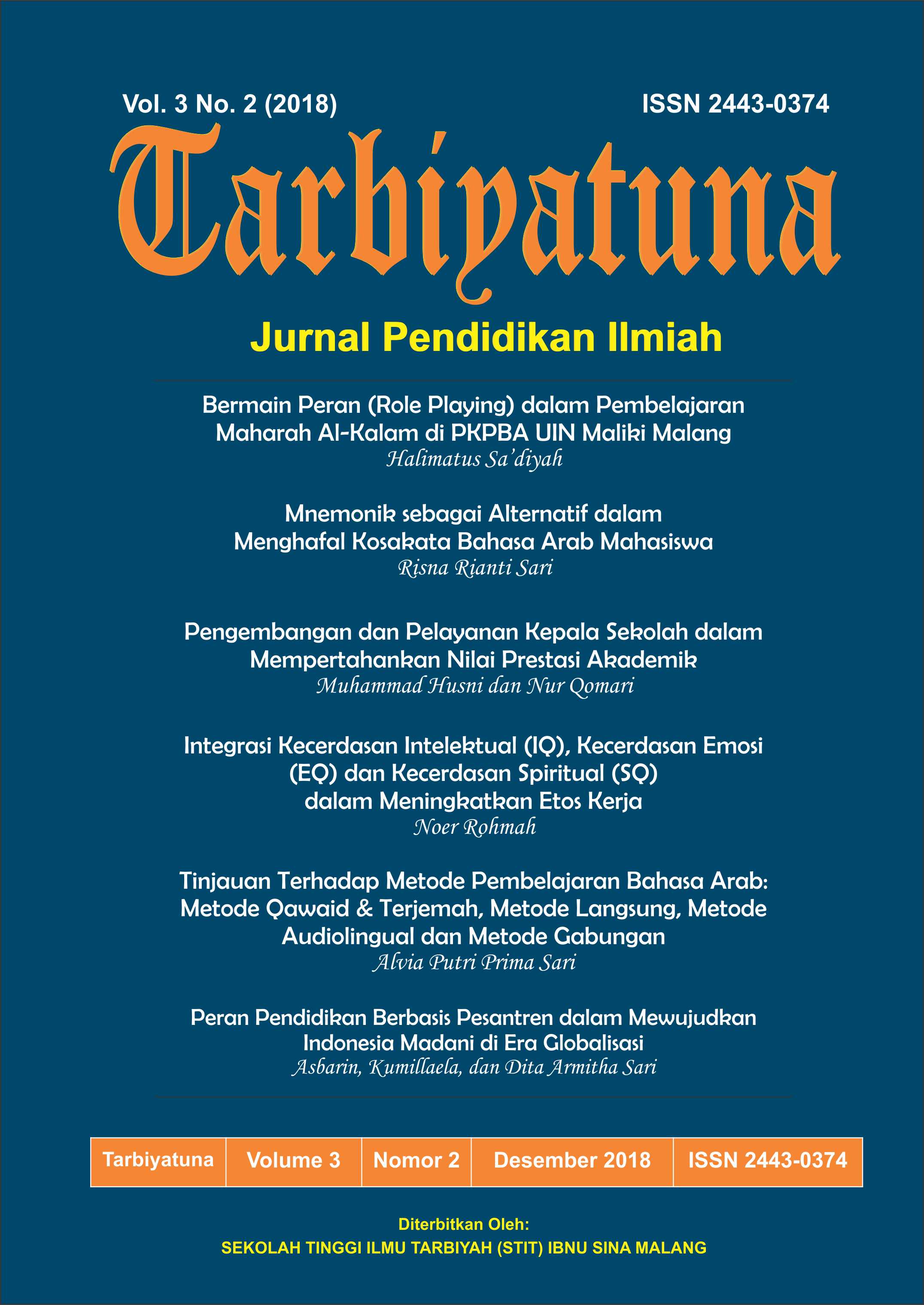Tinjauan Terhadap Metode Pembelajaran Bahasa Arab: Metode Nahwu Terjemah, Metode Langsung, Metode Audiolingual Dan Metode Gabungan
Abstract
Arabic language plays a big role in the lives of Muslims in Indonesia. Teaching this precious language, especially for non-native speakers, requires the appropriate method to help teachers in achieving the desired learning goals and to assist the learner in understanding the material as well as eliminate the flatness situation in the classroom. There are a variety of methods to apply, such as: translation method, direct method, audio-lingual method and combined method, where each of these methods has its advantages and disadvantages as well as positive and negative characteristics. Before choosing a method, each teacher should understand the meaning of ‘approaches’, ‘methods’, and ‘uslub’, in order to facilitate them in an effort to find the right methods.
References
El-Ushaily, Abdul Aziz Ibrahim. (2009). Psikolinguistik Pembelajaran Bahasa Arab. Terj. H.M. Jailani Musni. Bandung: Humaniora.
http://deanveria.wordpress.com/2011/01/19/metode-eklektik/
Majid, Shalah Abdul. (1981). Ta’allum al-Lughat al-Hayyah wa Ta’limuha. Maktabat Al-Lubnan, Beirut.
Nababan, Sri Utami Subyakto. (1993). Metodologi Pembelajaran Bahasa. Jakarta: Gramedia Pustaka Utama.
Sumardi, Muljanto. (1975). Pedoman Pengajaran Bahasa Asing. Surabaya: CV. Ilmu Surabaya.
Sutikno, Sobry. (2013). Belajar dan Pembelajaran. Lombok: Holistica.
Zaenuddin, Radhiyah, dkk. (2005). Metodologi dan Strategi Alternatif Pembelajaran Bahassa Arab. Cirebon: Pustaka Rihlah.

